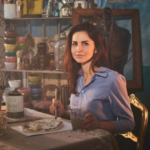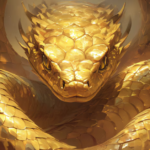Crocheting is a beloved craft that has been practiced for centuries, offering a way to create beautiful, functional, and decorative pieces. Among the many stitches that make up the world of crochet, the double crochet (dc) stitch is one of the most popular and versatile. It’s a foundational stitch used in various patterns and designs, ranging from blankets and scarves to intricate lacework and garments.
This comprehensive guide will explore everything you need to know about the double crochet’s stitch, from basic techniques to advanced patterns. We’ll cover the following topics:
- What is Double Crochet’s?
- History and Origins of Double Crochet
- Materials Needed for Double Crochet
- Step-by-Step Instructions for Double Crochet
- Common Mistakes and How to Avoid Them
- Double Crochet Variations
- Advanced Double Crochet Techniques
- Popular Double Crochet Patterns
- Tips and Tricks for Perfect Double Crochet
- Troubleshooting Common Issues
- FAQs About Double Crochet
- Conclusion: Mastering the Double Crochet Stitch
1. What is Double Crochet?
The double crochet’s (dc) is a basic crochet stitch that is taller than the single crochet’s (sc) but shorter than the treble (or triple) crochet (tr). The double crochet’s stitch is created by making a yarn over (yo) and inserting the hook into the specified stitch, drawing up a loop, and working through the loops on the hook in two stages. This stitch is a staple in many crochet patterns due to its height, which allows for quicker progress on larger projects and provides a balance of texture and drape.
Double crochet’s is commonly used in:
- Blankets and afghans
- Scarves and shawls
- Sweaters and cardigans
- Hats and mittens
- Home decor items such as pillows and curtains
2. History and Origins of Double Crochet
Crochet’s, as a craft, has been around for centuries, with its exact origins shrouded in mystery. Some believe crochet developed from traditional practices in China, South America, or Arabia, while others suggest it evolved from knitting and embroidery techniques. The double crochet stitch, specifically, has been a part of crochet patterns since the early days of the craft. It has been popularized due to its simplicity, speed, and versatility.
In historical terms, crochet gained widespread popularity in Europe during the 19th century, particularly in Ireland, where it was used as a means of economic survival during the Great Famine. Irish lace, a form of crochet lace, often utilized the double crochet stitch for its intricate designs. Today, the double crochet remains a fundamental part of both basic and advanced crochet techniques, cherished by beginners and experienced crafters alike.
3. Materials Needed for Double Crochet
To get started with double crochet’s, you’ll need a few basic materials:
- Yarn: Any type of yarn can be used, but beginners may find it easier to work with medium-weight yarn, such as worsted weight (category 4). The choice of yarn depends on the project you’re working on.
- Crochet Hook: The size of the hook will depend on the yarn weight. For medium-weight yarn, a hook size of 5.0 mm (H-8) is commonly used. The hook size can vary depending on your tension and the desired drape of the finished piece.
- Scissors: For cutting the yarn.
- Tapestry Needle: Used for weaving in the ends once your project is complete.
- Stitch Markers: Optional, but helpful for marking the beginning of rounds or specific stitch counts.
4. Step-by-Step Instructions for Double Crochet
Let’s walk through the steps to create a basic double crochet’s stitch:
Step 1: Make a Foundation Chain
Begin by making a slipknot and placing it on your hook. Chain (ch) the desired number of stitches. Remember that for a double crochet’s row, you need to chain an additional three stitches to act as your turning chain. For example, if you want a row of 10 double crochets, chain 13.
Step 2: Yarn Over
Wrap the yarn around the hook (yo) from back to front. This is your yarn over.
Step 3: Insert Hook into the Stitch
Insert the hook into the fourth chain from the hook. The first three chains count as the first double crochet’s in your row.
Step 4: Yarn Over and Pull Through
Yarn over again and pull through the chain stitch. You now have three loops on your hook.
Step 5: Yarn Over and Pull Through Two Loops
Yarn over and pull through the first two loops on your hook. You will have two loops remaining on the hook.
Step 6: Yarn Over and Pull Through the Remaining Two Loops
Yarn over once more and pull through the remaining two loops on the hook. You have completed one double crochet’s stitch.
Step 7: Repeat
Continue this process across the row by repeating steps 2 through 6. Insert the hook into the next chain, and continue double crocheting until you reach the end of the row.
Step 8: Turn Your Work
To start the next row, turn your work. Chain three (ch 3) to begin the next row; this chain acts as the first double crochet of the new row.
Repeat these steps to continue adding rows of double crochet stitches.
5. Common Mistakes and How to Avoid Them
Even experienced crocheters can make mistakes. Here are some common errors when working with double crochet’s and tips on how to avoid them:
- Mistake: Uneven Edges
Solution: Ensure you are working into the top of the turning chain at the end of each row. The turning chain counts as the first double crochet in a row. - Mistake: Incorrect Stitch Count
Solution: Count your stitches at the end of each row to ensure you have the correct number. Using stitch markers can help mark the beginning or end of your rows. - Mistake: Tight or Loose Tension
Solution: Practice maintaining consistent tension. If your stitches are too tight, try loosening your grip on the yarn or using a larger hook. If too loose, tighten your grip or use a smaller hook. - Mistake: Missing Stitches
Solution: Be mindful when inserting your hook into stitches. Ensure you’re not skipping any stitches, especially at the beginning and end of rows.
6. Double Crochet Variations
The double crochet’s stitch can be modified to create different textures and patterns. Here are some popular variations:
- Half Double Crochet (hdc): A stitch between a single and double crochet in height. Yarn over, insert the hook, yarn over, pull through, and then yarn over again and pull through all three loops on the hook.
- Double Crochet Two Together (dc2tog): A decrease stitch that combines two double crochet stitches into one. Yarn over, insert the hook into the first stitch, yarn over, pull up a loop, yarn over, pull through two loops. Then, yarn over, insert the hook into the next stitch, yarn over, pull up a loop, yarn over, pull through two loops, and finally yarn over and pull through all three loops on the hook.
- Double Crochet Cluster: Worked similarly to dc2tog but over the same stitch or space multiple times. This stitch creates a puffier, textured effect.
- Front Post Double Crochet (fpdc) and Back Post Double Crochet (bpdc): Worked around the post of the stitch rather than into the top loops. This creates a raised texture, often used in ribbing or cable patterns.
7. Advanced Double Crochet Techniques
Once you’ve mastered the basic double crochet’s stitch, you can explore more advanced techniques:
- Shell Stitch: Uses multiple double crochets worked into the same stitch to create a fan-like shape. It is often used in lace patterns or borders.
- V-Stitch: A double crochet’s, chain one, and double crochet worked into the same stitch or space. This creates a V-shaped pattern that is open and airy.
- Granny Squares: A popular motif in crochet, often made up of clusters of double crochets. Granny squares can be joined to create blankets, scarves, and other projects.
- Filet Crochet: A technique that uses a combination of double crochet stitches and chain spaces to create grid-like patterns or images.
8. Popular Double Crochet Patterns
The double crochet’s stitch is featured in countless patterns across the crochet world. Here are a few popular patterns that utilize this versatile stitch:
- Granny Square Blanket: A classic pattern made up of multiple granny squares, each featuring clusters of double crochets’s. The squares are sewn or crocheted together to form a blanket.
- Double Crochet Scarf: A simple, beginner-friendly project. Start with a foundation chain and work rows of double crochet’s back and forth to the desired length.
- Double Crochet Hat: A quick project using double crochet’s stitches worked in the round. You can customize the hat with different colors or by adding a brim.
- Chevron Blanket: This pattern uses increases and decreases with double crochet’s stitches to create a zigzag or chevron effect. It’s a great way to practice counting stitches and working with different colors.
9. Tips and Tricks for Perfect Double Crochet’s
- Practice Your Tension: Consistent tension is key to achieving uniform stitches. Practice holding your yarn and hook in a way that feels comfortable and maintains even tension.
- Use Stitch Markers: Mark the beginning of rounds or important stitch counts to help keep track of your work.
- Count Your Stitches: Make it a habit to count your stitches at the end of each row to ensure your work stays even.
- Experiment with Different Hooks: Different hook materials (metal, plastic, bamboo) can affect your tension and comfort. Experiment to find what works best for you.
- Block Your Finished Pieces: Blocking is a technique that involves wetting or steaming your finished piece and shaping it to the desired dimensions. It can help even out stitches and give your project a more professional finish.
10. Troubleshooting Common Issues
- Stiff or Tight Fabric: If your fabric feels stiff, try using a larger hook or a lighter-weight yarn. This can create a more relaxed fabric with better drape.
- Crooked or Wavy Edges: This usually results from inconsistent stitch counts or tension. Make sure you’re chaining the correct number at the start of each row and working into the top of the turning chain.
- Holes or Gaps: If you notice unwanted holes in your fabric, make sure you’re not skipping stitches. Also, check your tension—if it’s too loose, try using a smaller hook.
11. FAQs About Double Crochet
Q: What is the difference between a double crochet’s and a single crochet?
A: A double crochet’s is taller than a single crochet. A single crochet involves fewer steps and creates a denser fabric, while a double crochet’s is worked in more stages, creating a taller stitch and a more open fabric.
Q: Can I use double crochet’s in amigurumi?
A: While it’s possible, most amigurumi patterns use single crochet’s stitches to create a tight, dense fabric that holds stuffing well. Double crochet’s may create gaps that allow stuffing to show through.
Q: How do I increase and decrease with double crochet’s?
A: To increase, work two double crochet’s into the same stitch. To decrease, work two double crochet’s together (dc2tog) as described in the variations section.
Q: Is double crochet good for beginners?
A: Yes, double crochet’s is an excellent stitch for beginners. It’s easy to learn and works up quickly, making it perfect for larger projects like blankets or scarves.
12. Conclusion: Mastering the Double Crochet’s Stitch
The double crochet’s stitch is a fundamental part of the crochet world, offering versatility and ease for a variety of projects. By mastering this stitch, you open the door to countless patterns and techniques, allowing you to create beautiful and functional items with ease.
Whether you’re a beginner just learning the basics or an experienced crocheter’s looking to expand your repertoire, the double crochet’s stitch is an essential tool in your crafting arsenal. With practice and patience, you’ll soon be creating stunning pieces that showcase your skills and creativity.







